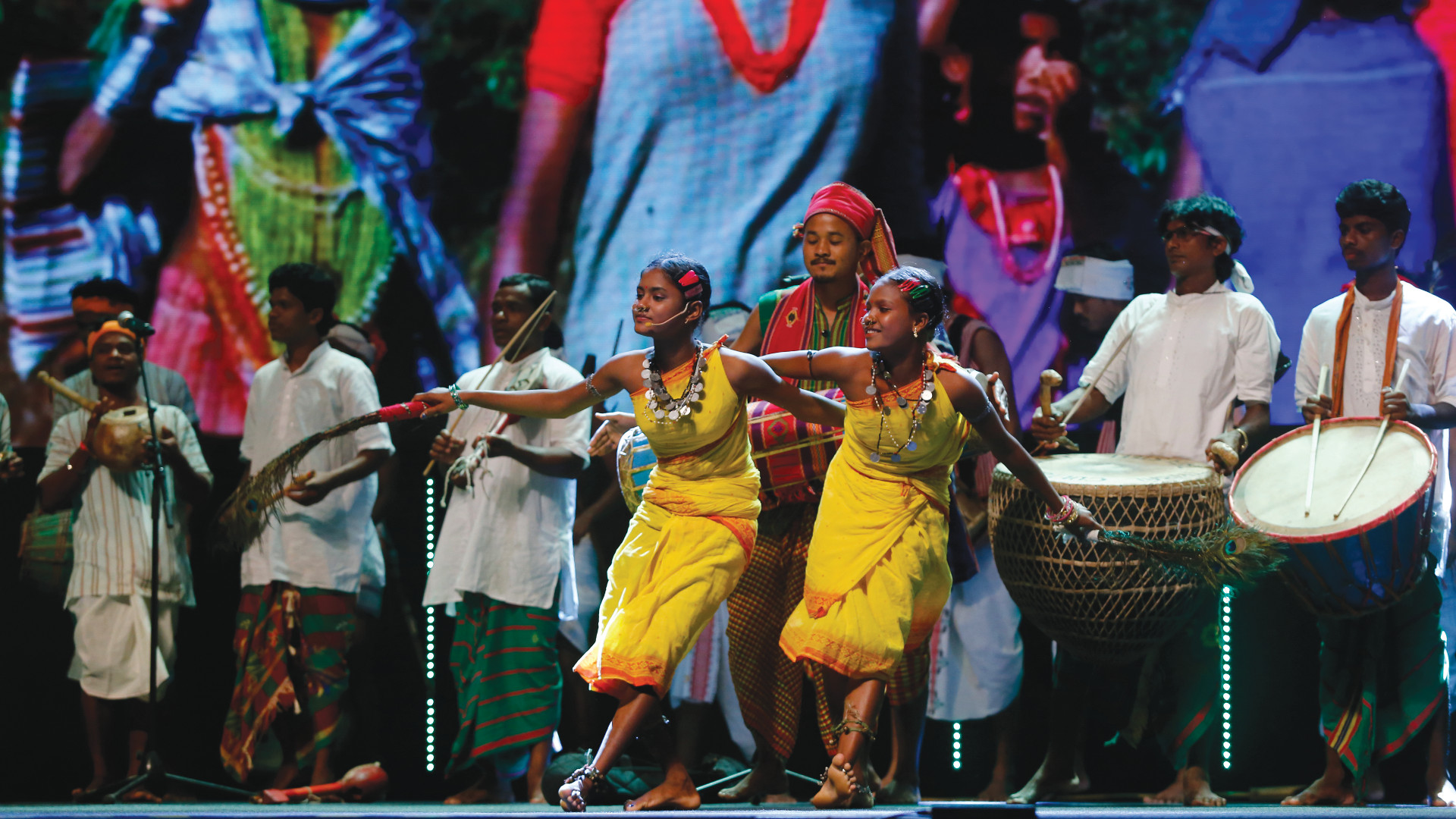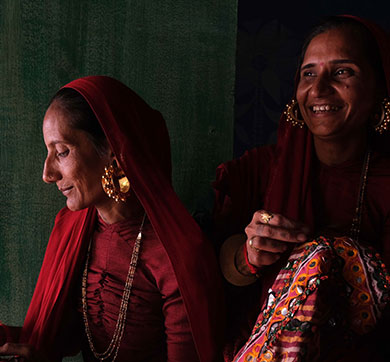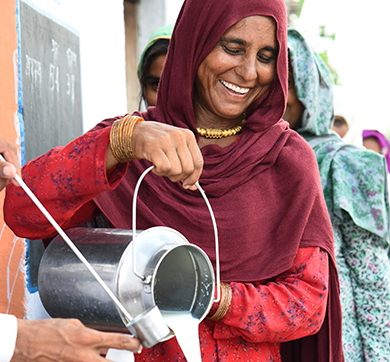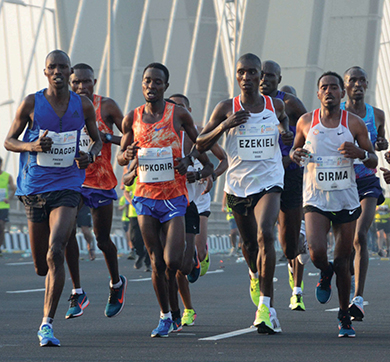Namrata Narasimhan | 1400 words | 5 minute read
When five Juang tribals from the Jajpur district of Odisha arrived in Mumbai in July, it was a milestone for the tribe as well as the Tata group.
The Juang hamlets, perched atop the hills at Nagada village in Odisha’s Jajpur district, were largely inaccessible until recently. There was no road cutting through the deep forest area, and it took a six-toeight-hour uphill trek to reach their hamlets. Things began to change only in 2015 when Tata Steel started an education project in the area.
The project and the people executing it earned the confidence of this particularly vulnerable tribal group through sustained and meaningful engagement, which is evident from the fact that the Juang elders decided to send three young girls and two men from the tribe to perform at the Tata group’s annual JRD QV in Mumbai.
They were part of the troupe of 60 tribal performers — belonging to 12 tribes from Assam, Jharkhand, Nagaland, Odisha and West Bengal — who put up the closing act at the National Centre for the Performing Arts (NCPA) that evening.
“I never imagined that I would get the opportunity to perform at the NCPA! This is the biggest platform I have ever performed on,” said Kishore Lakra, a 28-year-old from the Ora tribe of Jharkhand.
The NCPA is not just India’s largest performing arts centre, but in the audience that evening were people like Tata Trusts Chairman and Tata Sons Chairman Emeritus Ratan Tata and Tata Sons Chairman N Chandrasekaran.
For Mr Lakra, this performance was doubly special because he was formally trained in playing the mandar (an oblong drum hung across the neck and played with both hands) by Tata Steel, at centres run under their Tribal Cultural Society. It took him one-and-a-half years to become proficient, and he acknowledges the company’s key role not only in that, but also in giving him opportunities like this one.
Quest For Identity
The Tata group has had a relationship with the tribal community for over a century. Sourav Roy, chief, corporate social responsibility (CSR), Tata Steel, said, “The lens that is over this relationship is one of shared history. But one can’t co-exist for 100 years and just call it shared history; it becomes shared context. This includes understanding each other at a deeper level. That is where we are vis-à-vis our communities and expectations from us are higher, including to meet some higher order asks.”
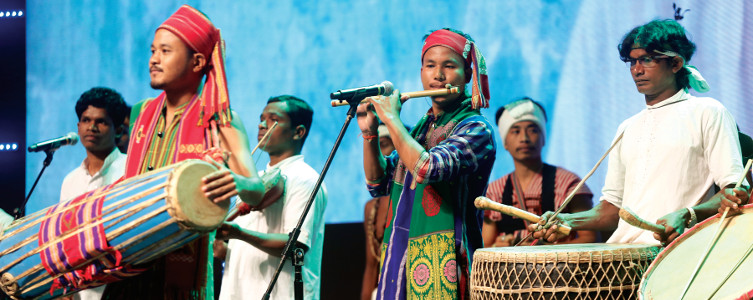
One of these asks is tribal identity. “From a conventional CSR measurement viewpoint, it is a fairly nebulous construct that does not lend itself to measurement, because it doesn’t lend itself to clear outcomes. I can’t tell you what your identity is. I can, at best create an environment in which you discover your own identity.”
This is done by Tata Steel through Samvaad and Tribal Leadership Programme (TLP). Samvaad, the annual flagship event, that began in 2014, focuses on providing a platform for discourse on issues that impact tribal communities across India. The TLP identifies potential change-makers among tribal communities, nurtures their skills and hand-holds them in their journey of ushering social change. TLP recently concluded its second edition.
Tata Steel tapped into both networks to identify participants for this performance.
For performers like Madhusmita Majhi, both initiatives played a key role in learning about facets of her identity as a member of the Gond tribe of Odisha. She moved around the state for a large part of her childhood and teen years, because of her father’s government job transfers. As a result, she didn’t know anything about the tribal way of life.
“I was always curious about my identity as a tribal and kept asking my parents about it. Samvaad and TLP gave me the opportunity to meet other tribes and learn more about tribal culture, traditions, language, lifestyle and attire,” she said.
“People have started hiding their identity as tribal. Thanks to Tata Steel, I have made much progress in the search for my identity and I am now working towards changing this for other tribals too,” added Ms Majhi, who was also excited about her first performance on such a large stage.
Kinship Of Solutions
Tata Steel’s initial work with the tribal communities was restricted to its immediate areas of operation. Today, it has a pan-India presence.
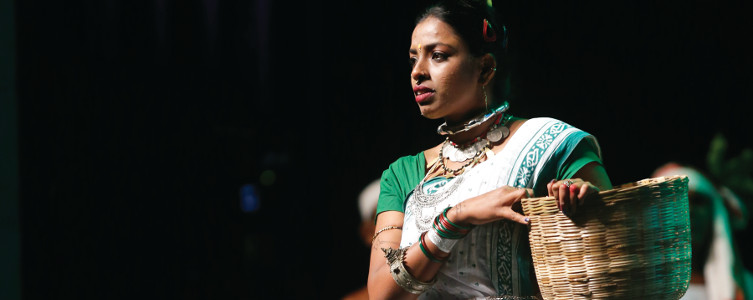
Mr Roy says, “What drives tribal identity is kinship. I would discover my identity if I am placed in a larger sea of people. Where the history of tribals in India may lend itself to a kinship of problems, what we are driving is a kinship of solutions."
Debaraj Rabha from the Rabha tribe in Nagaland, who connected with Tata Steel through a performance at Samvaad in 2016, said, “Every tribe in India has its own culture, dance, song, but we don’t know much about each other. Tata Steel gives us the opportunity to stay together, learn from each other and helps us realise our identity as Indians.”
The Act
This was evident in the way the performance came together. “It begun with a sunrise, followed by people going off into the forest in the morning to collect wood, sowing or ploughing the fields, tribal rituals, and harvest dances,” says Ankita Toppo of team CSR, a key person behind the show.
The production, focussed on a day in the life of a tribal person, followed a democratic process, with the first day of rehearsal spent understanding each tribe’s rituals, dances and instruments.
“After five days of rehearsals at Jamshedpur, the troupe set out for Mumbai, a journey of firsts for many of them — boarding a train, travelling to a megapolis and performing on a stage as big as the NCPA,” says Stanley Johnson of team CSR.
Mr Rabha, a student of anthropology who teaches tribal dance forms and instruments to the young people in his tribe, echoed the troupe when he said, “This is my first trip to Mumbai, and I am very excited about this opportunity.”
For the Tata Steel CSR team too, there were several firsts, like putting together a performance of this scale in under 10 days, learning about a tribal bamboo flute that required water to be poured into it during the performance for optimal functioning and working out how a circular dance formation will play out on stage.
“Most tribal dance formations are circular, as it signifies both eternity and cyclic rhythm in tribal culture,” Mr Roy said.“However, on stage, you don’t put your back to the audience. So, we needed to strike the right balance.” A key player in directing the performance was Nuna Majhi of the Santhal tribe in Odisha. The 32-year-old used to play the banam (a large violin-like string instrument) and the tuila (a single-stringed instrument made of bamboo sticks) and performs in villages for a living. When he got a chance to work as the master trainer at Tata Steel’s training centres, he jumped at the opportunity. Today, over three years down the line, he also helps in directing performances.
“When I was performing earlier, I did not get such big programmes. After working with Tata Steel, I have been getting exposure to big platforms. I have travelled to various places like New Delhi, Bhubaneshwar, and now Mumbai,” he said.
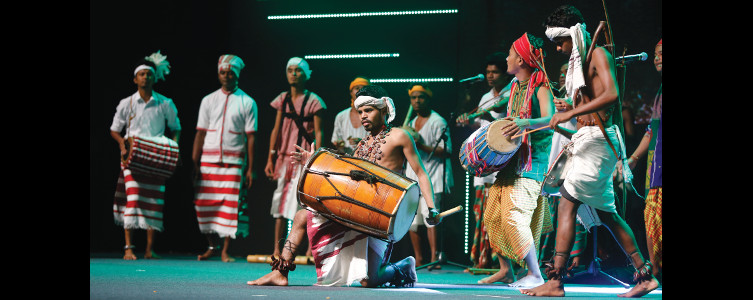
Finding Pride
Given the historic discrimination against tribal groups, the performance at NCPA fulfilled a dual objective — making the audience aware of the tribal lifestyle, and creating a platform for the tribal communities to showcase their talent and lifestyle with pride.
“Today, everyone is running after sustainability and a sustainable lifestyle. They are running after an organic world, much more linked to nature, and a betterpaced empathetic lifestyle”, Mr Roy said. “This is the tribal lifestyle. If this is what the world is striving for, how can it continue to be a source of diffidence for the tribal communities?”
He added, “The foundation of our work is that these communities have confidence in us and pride in their identity and culture.”
The resounding applause from the audience was just the bonus.




